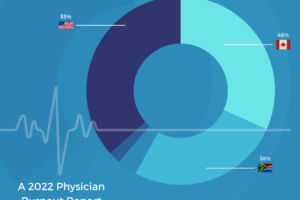The Evolution of Medical Scribing: Improving Healthcare Efficiency

The Evolution of Medical Scribing: Improving Healthcare Efficiency
In the ever-evolving healthcare landscape, where time is of the essence and accuracy is paramount, medical scribing has become a vital tool for optimizing clinical processes and improving patient care. The practice of medical scribing has undergone a remarkable evolution over time, moving from traditional pen-and-paper documentation to sophisticated electronic health record (EHR)systems that have completely changed how healthcare professionals capture and manage patient data.
The History of Medical Scribing:
Medical scribing has its roots in the long-standing habit of doctors taking notes while seeing patients. In the past, doctors would record patient histories, examination results, and treatment plans using handwritten notes. However, the handwritten documentation method was frequently laborious and prone to mistakes, which resulted in inefficiencies in the provision of treatment.
Transition to Electronic Health Records:
The development of medical scribing experienced a major turning point with the introduction of electronic health records in the late 20th century. EHR systems provide healthcare providers with a more effective and structured way to record patient information by substituting digital platforms for conventional paper-based charts. In response to this technological revolution, medical scribes helped doctors navigate electronic health record interfaces, entered data in real-time, and made sure that medical records were accurate and comprehensive.
The Role of Medical Scribes Today:
In contemporary healthcare settings, medical scribes play a multifaceted role in clinical operations, acting as essential members of the care team. Their responsibilities extend beyond mere data entry to include a range of tasks aimed at maximizing patient satisfaction and physician productivity. Among such responsibilities performed by medical scribes are:
- Documentation Assistance: Medical scribes work closely with doctors to correctly and thoroughly record patient visits. Scribes improve efficiency and throughput by allowing physicians to concentrate more on providing direct patient care by taking important facts in real-time.
- Workflow Optimization: By arranging patient charts, locating pertinent medical information, and arranging supplemental services, scribes assist in streamlining clinical operations. Scribes improve the overall effectiveness of healthcare delivery by promoting smooth communication and work delegation.
- Clinical Support: In addition to handling administrative duties, medical scribes help doctors during patient visits by offering insightful clinical support. They free up doctors’ time to focus on diagnostic evaluation and treatment planning by helping with medication reconciliation, history-taking, and physical exam documentation.
- Quality Assurance: Medical scribes are essential to maintaining the completeness and correctness of medical records, which improves the standard of patient care. Scribes assist in preserving the accuracy of medical records and facilitating clinical decision-making by checking charts for mistakes or omissions and providing clarification on unclear material.
Technological Advancements and Future Trends:
The evolution of medical scribing continues to be driven by technological advancements and innovations in healthcare. With the rise of voice recognition software, natural language processing, and artificial intelligence, there is a growing emphasis on leveraging automation to augment the capabilities of medical scribes. Advanced scribing platforms equipped with predictive analytics and clinical decision support tools are poised further to enhance efficiency, accuracy, and clinical outcomes.
Furthermore, the COVID-19 pandemic accelerated the uptake of virtual scribing and telemedicine, allowing scribes to assist medical professionals from a distance and broaden their scope beyond conventional clinical settings.
Medical scribing is predicted to change in line with healthcare, becoming more and more essential to the provision of high-quality, patient-centered treatment as a result of shifting patient needs and technological improvements.
In conclusion, the evolution of medical scribing reflects the ongoing quest for efficiency, accuracy, and excellence in healthcare delivery. From its humble beginnings as handwritten notes to its current iteration as a sophisticated digital practice, medical scribing has undergone a remarkable transformation, reshaping the landscape of clinical documentation and workflow management. As technology advances and healthcare evolves, the role of medical scribes will undoubtedly remain indispensable, serving as trusted allies to physicians and champions of patient care. This is a familiar and thriving ground for Dorascribe, your number 1 reliable Medical AI speech-to-text transcription you can trust.







